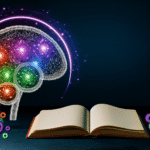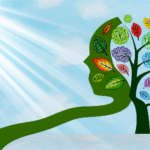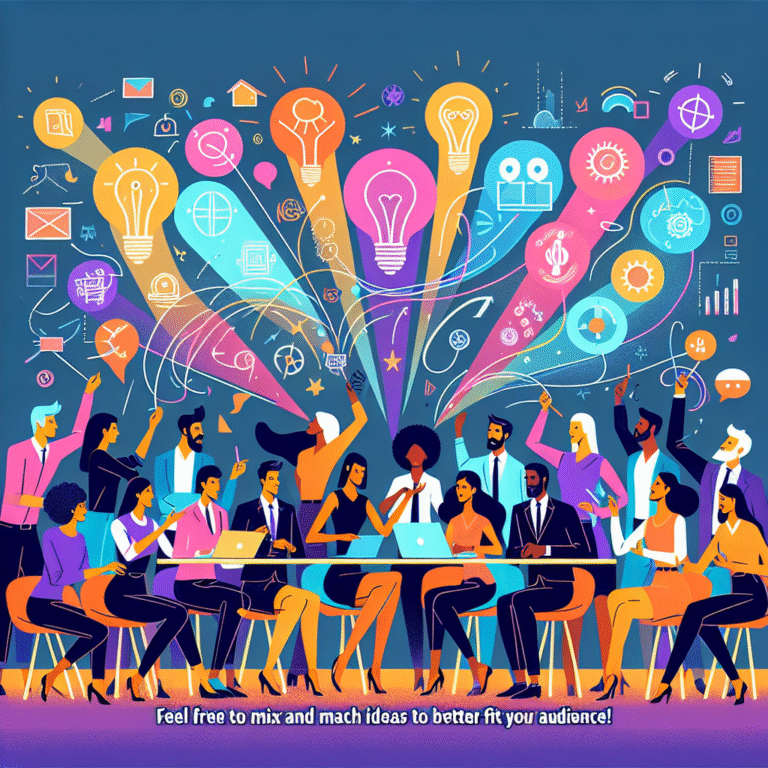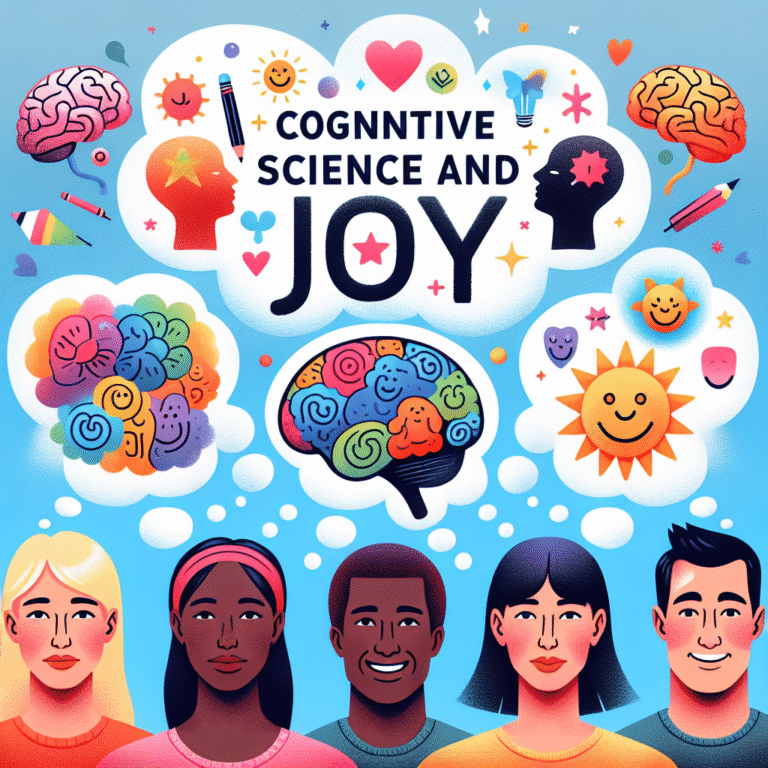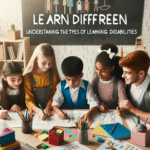
Bridging Gaps: The Essential Role of Empathy in Building Stronger Relationships
Introduction
In an increasingly interconnected world, where digital communication often overshadows face-to-face interactions, the importance of genuine human connection cannot be overstated. The disparities in our experiences, backgrounds, and perspectives can often lead to misunderstandings and conflict. This is where empathy steps in as a vital tool in "Bridging Gaps: The Essential Role of Empathy in Building Stronger Relationships." Empathy empowers us to understand one another beyond words, facilitating deeper connections and enhancing personal and professional relationships alike.
Imagine a workplace where team members genuinely understand each other’s viewpoints, fostering collaboration rather than competition. Picture families where members connect deeply, resolving conflicts amicably. Empathy acts as a bridge over the chasms that divide us, allowing for stronger bonds and communities.
In this article, we will explore the essential role of empathy in building relationships, delve into real-world case studies that highlight its impact, and provide actionable insights for cultivating this crucial skill in your own life. So, let’s embark on this journey of understanding and connection that can transform our personal and professional relationships.
The Concept of Empathy
What Is Empathy?
Empathy is the ability to understand and share the feelings of another. It goes beyond sympathy, which involves feeling pity or sorrow for someone else’s misfortune; empathy requires us to put ourselves in another person’s shoes, experiencing their emotions and perspective. There are two primary types of empathy: cognitive empathy and affective empathy.
- Cognitive Empathy: This involves understanding another person’s thoughts and emotions, allowing one to see things from their perspective.
- Affective Empathy: This is the emotional response to another’s experience, where one actually feels what the other person is going through.
Understanding these two types of empathy is crucial to grasping how they can "bridge gaps" in relationships.
The Science Behind Empathy
Recent studies in neuroscience have shown that empathetic responses can activate specific brain regions associated with emotion recognition and social bonding. Research conducted by Dr. Tania Singer at the Max Planck Institute demonstrated that when individuals engage in empathetic thoughts, areas in the brain linked to emotional reactions become active. This scientific backing reinforces the idea that empathy is not just a moral or social virtue; it is a biological imperative that can lead to richer, more fulfilling relationships.
Bridging the Gaps: Empathy in Practice
Case Study 1: Empathy in the Workplace
One compelling example of empathy’s role in building strong relationships can be found in organizations that prioritize emotional intelligence training. For instance, take Google’s Project Aristotle, which sought to identify the key elements of effective teams. The research uncovered that psychological safety – a sense of security where team members feel safe to take risks and express their thoughts – was crucial for high-performing teams. This security can be fostered through empathetic leadership.
Analysis: In Google, leaders who actively listened to employees and validated their feelings created an environment conducive to openness and collaboration. This not only strengthened relationships within teams but also resulted in enhanced innovation and productivity.
Case Study 2: Empathy in Community Building
In a different context, consider the work done by the organization "Bridging the Gap," which focuses on community efforts to reduce social and economic disparities. Through projects that encourage dialogue between diverse cultural groups, such as hosting community forums and workshops, they employ empathy as a fundamental principle. Participants are encouraged to share their stories, leading to enhanced mutual understanding and respect.
Analysis: Such initiatives illustrate how empathy can dismantle prejudices and build a sense of community, ultimately leading to stronger relationships among individuals who might otherwise remain separate.
Table: The Impact of Empathy on Relationship Outcomes
| Aspect | Before Empathy | After Empathy |
|---|---|---|
| Communication Clarity | Low | High |
| Trust Levels | Low | High |
| Conflict Resolution | Prolonged Cases | Swift Outcomes |
| Emotional Connection | Weak | Strong |
This table showcases the tangible benefits of incorporating empathy into various forms of relationships.
Cultivating Empathy
Even if empathy may appear innate to some, it is a skill that can be cultivated. Here are several strategies for enhancing your empathetic abilities to "bridge gaps" in relationships effectively.
1. Active Listening
Active listening involves fully focusing on the speaker, understanding their message, responding thoughtfully, and retaining the information for future reference. When you practice active listening, you are not merely waiting for your turn to speak but are genuinely engaging with the person’s words. Use techniques such as nodding, paraphrasing, and asking clarifying questions to demonstrate your engagement.
2. Perspective-Taking
Imagine how someone else might feel in a given situation. This practice of perspective-taking allows us to step beyond our immediate experiences and consider the emotions and thoughts of others. Exercises that involve role-playing or storytelling can help expand your perspective and deepen your understanding of others’ experiences.
3. Emotional Validation
When someone shares their feelings, acknowledging their emotions without judgment fosters deeper connections. Phrases like "It makes sense that you’re feeling this way" or "I can see why that would be upsetting to you" validate the other’s feelings, helping build trust and rapport.
4. Empathy Training Programs
Organizations and institutions are increasingly offering empathy training programs aimed at enhancing emotional intelligence within teams. Participating in such programs can provide insights, techniques, and a supportive environment to practice empathetic skills effectively.
5. Self-Reflection
Take time to reflect on your own emotions and experiences. Understanding your feelings can enable you to connect with others on a more profound level. Journaling about your emotions and how they relate to your interactions with others can be a practical tool for fostering empathy.
The Role of Empathy in Conflict Resolution
Conflict is an inevitable part of human interaction. However, empathy can play a crucial role in resolving disputes and fostering understanding among individuals.
Case Study 3: Mediation through Empathy
Consider a mediation scenario between two departments in an organization that have been experiencing tension. An effective mediator trained in empathetic listening can bring both parties together in a safe space. By focusing on understanding the underlying feelings and motivations of each team, the mediator can guide the conversation toward collaborative solutions.
Analysis: This empathetic approach enables the individuals involved to feel heard and valued, resulting in stronger interdepartmental relationships and a more harmonious workplace environment.
The Broader Impact of Empathy on Society
Empathy and Social Change
Empathy extends beyond individual relationships and has the potential to impact societal issues. Movements advocating for social justice often leverage empathy to garner support by sharing personal stories of hardship and resilience. By encouraging people to connect emotionally with these narratives, social movements can inspire action and change.
Case Study 4: "Humans of New York"
The "Humans of New York" project is a powerful illustration of using empathy to bring awareness to social issues. Through storytelling that highlights personal experiences, founder Brandon Stanton sheds light on the lives of everyday people. This project has fostered a significant sense of community and understanding among individuals who may not have otherwise crossed paths.
Analysis: By documents and amplifying diverse stories, "Humans of New York" demonstrates how empathy can bridge gaps in understanding across societal divides, encouraging dialogue and fostering compassion.
Conclusion
The journey of "Bridging Gaps: The Essential Role of Empathy in Building Stronger Relationships" is one that each of us can undertake. Empathy is not merely a soft skill but a critical instrument that can enhance our relationships, workplaces, and communities. By adopting practices that foster this essential quality, we can break down barriers and create interconnected, supportive networks.
As we move forward, consider how you might integrate empathy into your daily interactions. Start by practicing active listening or engaging in dialogues that encourage understanding. The transformation may begin with you, ultimately leading to stronger relationships and a more compassionate society.
FAQs
1. What role does empathy play in communication?
Empathy enhances communication by enabling individuals to truly understand one another’s perspectives and emotions, leading to clearer dialogue and fewer misunderstandings.
2. Can empathy be developed over time?
Yes, empathy is a skill that can be cultivated through practice and intentional actions, such as active listening, perspective-taking, and self-reflection.
3. How does empathy impact workplace relationships?
Empathy fosters an environment of psychological safety, leading to better collaboration, increased trust, and more effective conflict resolution among team members.
4. What are some common barriers to practicing empathy?
Barriers to empathy can include pre-existing biases, stress, emotional exhaustion, and a lack of active listening or understanding toward others’ perspectives.
5. How does empathy contribute to social change?
Empathy encourages individuals to connect emotionally with others’ experiences, driving support for social movements by highlighting personal stories and fostering a collective sense of responsibility and urgency for change.
In a world full of challenges, taking actionable steps to cultivate empathy can undoubtedly lead to bridging gaps and building stronger relationships, not only personally but also at a societal level. The time to start is now.
